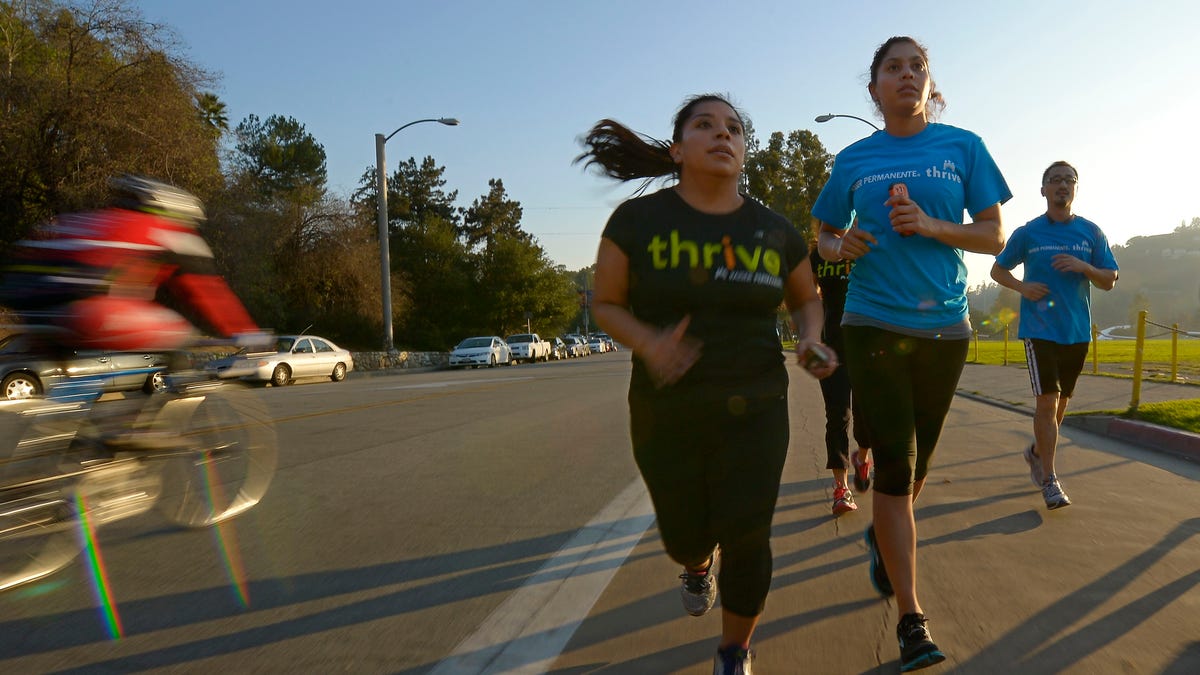
In this Tuesday, Dec. 11, 2012 photo, Zendi Solano, center, trains with running club members Rian Barrett, second from right, and Richard Chen in Pasadena, Calif. Dr. Robert Sallis says some patients may not be aware that research shows physical inactivity is riskier than high blood pressure, obesity and other health risks people know they should avoid. As recently as November 2012, a government-led study concluded that people who routinely exercise live longer than others, even if they're overweight. (AP Photo/Mark J. Terrill)
The obesity epidemic in the United States shows no signs of ending anytime soon.
And with Latinos at a significantly higher rate of being overweight and being diagnosed with diabetes, the problem, experts say, can no longer be ignored.
That why researchers in Brownsville, Texas, a city with a 90 percent Hispanic population, have been trying to identify and study why there is such high diabetes and obesity rates in the Latino population. Diabetes is a growing problem in the United States, much like obesity, and the two are linked to one another.
Dr. Joseph B. McCormick, the dean of the University of Texas’ School of Public Health, helped found the Hispanic Health Research Center after seeing how these issues were affecting his community.
The growing number of Latinos suffering from obesity and diabetes “is clearly a combination of lifestyle, genetics, and socioeconomic status,” McCormick said.
“We’re talking about human behavior and decades of building up to this problem,” he said.
“Thirty, 40 years ago, we did not have these outbreaks,” McCormick said. “Our genes didn’t change in that time.”
Because Latinos are more likely to be overweight, they are at higher risk of developing diabetes. The Office of Minority Health said Latinos are nearly twice as likely to be diagnosed with diabetes.
After seeing the widespread health issues in the Latino community, McCormick said he and others wanted to figure out how to solve the problem.
“We know lifestyle is the key to so many health issues today,” McCormick said.
Using the data they’ve produce through their various studies, the center has been able to create effective community health care projects, like a local farmer’s market along with programs that promote healthy living.
The hope is that through the center’s efforts, which have garnered national attention, other communities will adopt similar programs.
“The bottom line of this is we know this is not going to be done by the government,” McCormick said regarding improving the health of Latinos.
“This is going to be done when the community decides it no longer wants to have this health burden anymore and wants to do something about it.”
